Nakajima Ki-43 II Hayabusa
Foreign Service
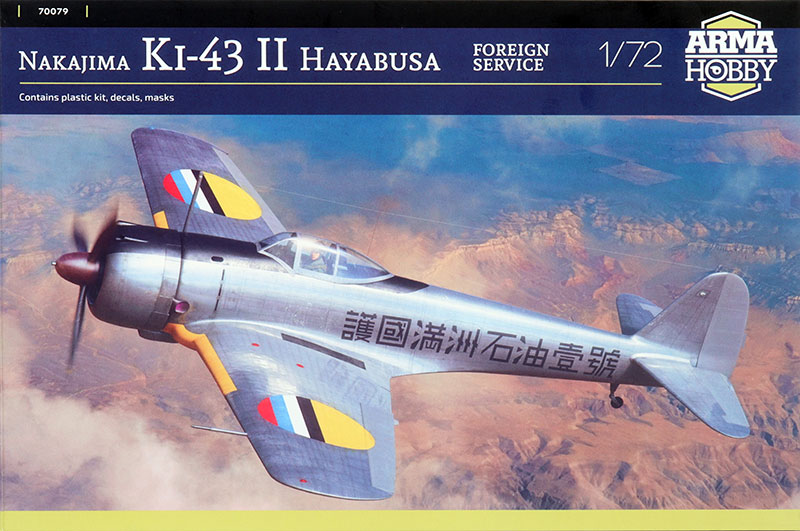
Arma Hobby, 1/72 scale
S
u m m a r y : |
Description and Item No.: |
Arma Hobby Kit No. 70078 - Nakajima Ki-43 II Hayabusa Foreign Service |
Contents and Media: |
70 parts in grey plastic; four parts in clear plastic; self-adhesive canopy and wheel masks; markings for three aircraft options; link to downloadable 3d detail parts. |
Price: |
€21.36 plus shipping available online at Arma Hobby
£21.59 EU Price (£17.99 Export Price) Plus Shipping at Hannants
and hobby retailers worldwide |
Scale: |
1/72 |
Review Type: |
First Look |
Advantages: |
High quality moulding; excellent surface textures and detail; high quality decals. |
Disadvantages: |
Excess flash on fin; end-opening box. |
Recommendation: |
Arma Hobby's second iteration of the 1/72 scale Ki-43 II Hayabusa is another gorgeous little kit - crisp surface texture, high moulding quality and a very high level of detail. It's a great package with the plastic parts as well as self-adhesive masks. What more could we ask for? |
Reviewed by Brett Green

The Nakajima Ki-43 Hayabusa was a single-engine land-based tactical fighter used by the Imperial Japanese Army Air Service in World War II.
The Allied reporting name was "Oscar", but it was often called the "Army Zero" by American pilots because it bore a certain resemblance to the Mitsubishi A6M Zero, the Imperial Japanese Navy's counterpart to the Ki-43. Both aircraft had generally similar layout and lines, and also used essentially the same Nakajima Sakae radial engine, with similar round cowlings and bubble-type canopies, the Oscar's being distinctly smaller and having much less framing than the A6M. While relatively easy for a trained eye to tell apart with the finer lines of the Ki-43’s fuselage – especially towards the tail – and more tapered wing planform; in the heat of battle, given the brief glimpses and distraction of combat, Allied aviators frequently made mistakes in enemy aircraft identification in the heat of a dogfight, reportedly having fought "Zeros" in areas where there were no Navy fighters.
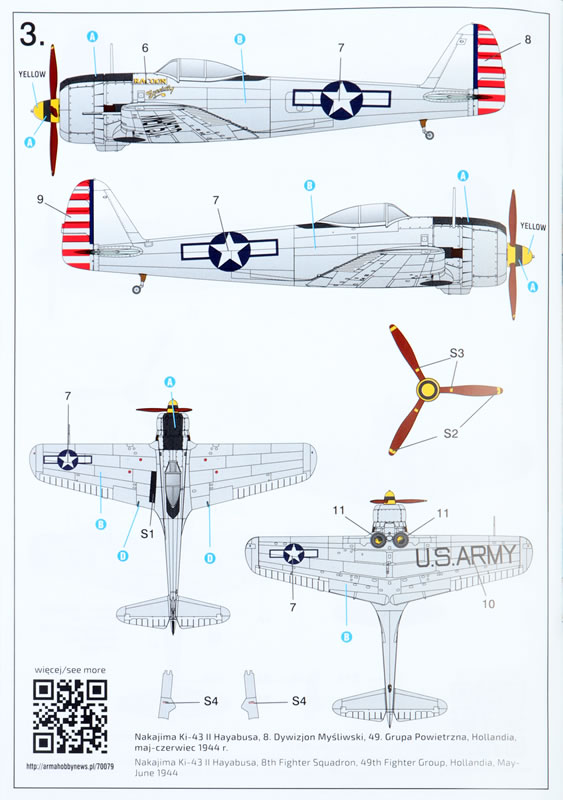
Like the Zero, the radial-engined Ki-43 was light and easy to fly and became legendary for its combat performance in East Asia in the early years of the war. It could outmanoeuvre any opponent, but did not initially have armour or self-sealing fuel tanks, and its armament was poor until its final version, which was produced as late as 1945.[4][5] Allied pilots often reported that the nimble Ki-43s were difficult targets but burned easily or broke apart with few hits.[6]
Total production amounted to 5,919 aircraft. Many of these were used during the last months of the war for kamikaze missions against the American fleet.*
Arma Hobby's second 1/72 scale Ki-43 Hayabusa appears to comprise identical plastic sprues to its debut Oscar with three foreign service decal options and attractive new box art.
Let's jog our memories with a close-up look.
Arma Hobby's 1/72 scale Ki-43 II Hayabusa comprises 70 parts in grey plastic, four parts in clear plastic, self-adhesive canopy and wheel masks, markings for three aircraft and a link to downloadable 3d detail parts.
The grey plastic parts are delivered on two sprues. Moulding quality is excellent with only a single imperfections on my sample. See below for details.
Arma’s website advises that long-run metal moulds are used for their kit production, and it really does show.
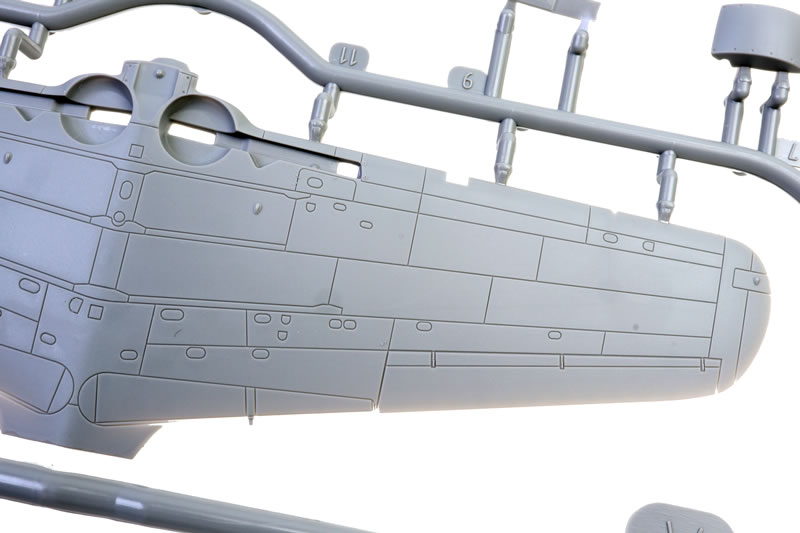
Being a long-run kit, the parts are moulded with all the alignment aids that you would expect including locating pins, holes and tabs.
The larger parts feature a smooth satin finish. Surface textures are just gorgeous. Recessed panel lines, raised fastener heads, blister fairings and other structural details are very fine.
The rudder is moulded as part of the fuselage. Fabric texture effect on the rudder is remarkably subtle. However, the port side tail suffers from unsually heavy flash and a sprue attachment point that extends onto the leading edge of the fin. Take care when cleaning up this area.
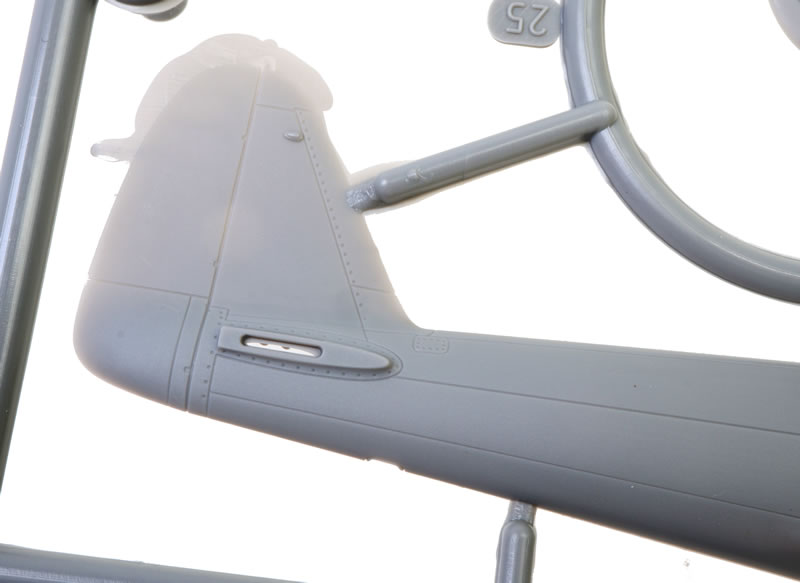
The fuselage is supplied as left and right halves with the standard fin moulded to the fuselage halves.
Some cockpit sidewall structural detail is moulded directly to the inside of the fuselage.
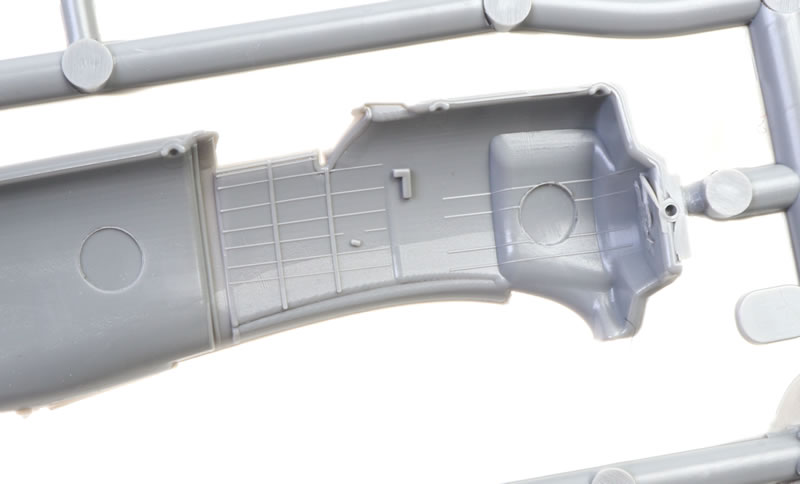
The cockpit floor is moulded as parts of the centre section of the bottom wing half.
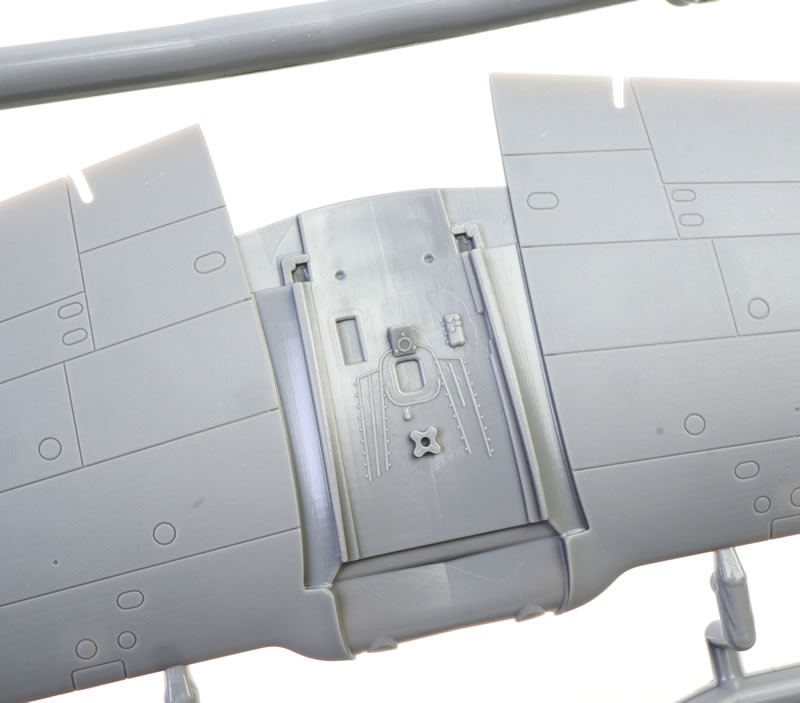
The seat backrest and rear bulkhead are moulded as a singke piece. The backrest features hollowed-out lightening holes - very impressive in this small scale. The seat pan is a separate part.
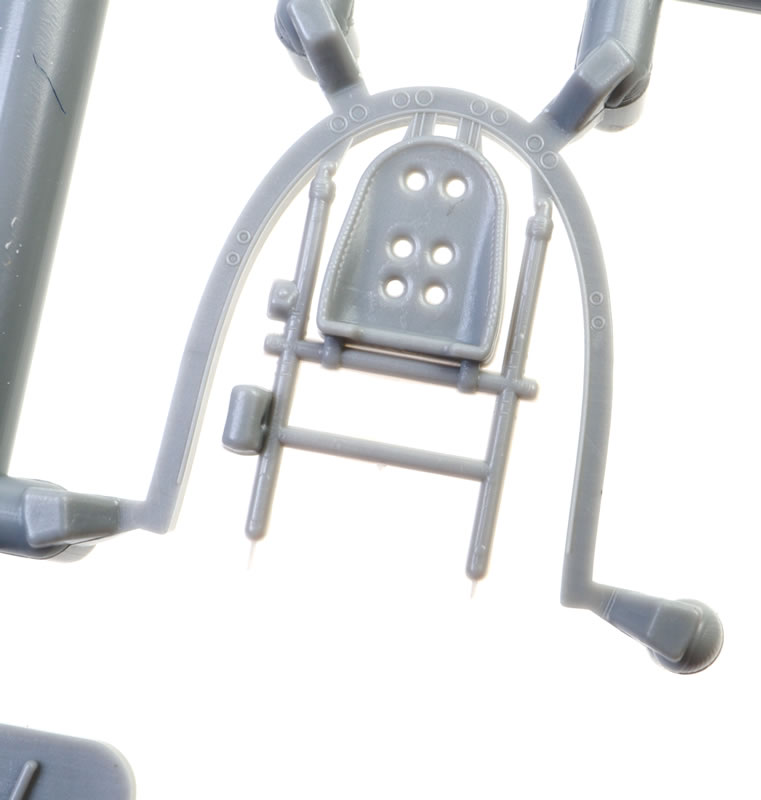
Side panels, the throttle quadrant, control column, rudder pedals, handles knobs and more round out the front office detail.
I particularly like the tiny but perfectly formed throttle quadrant.
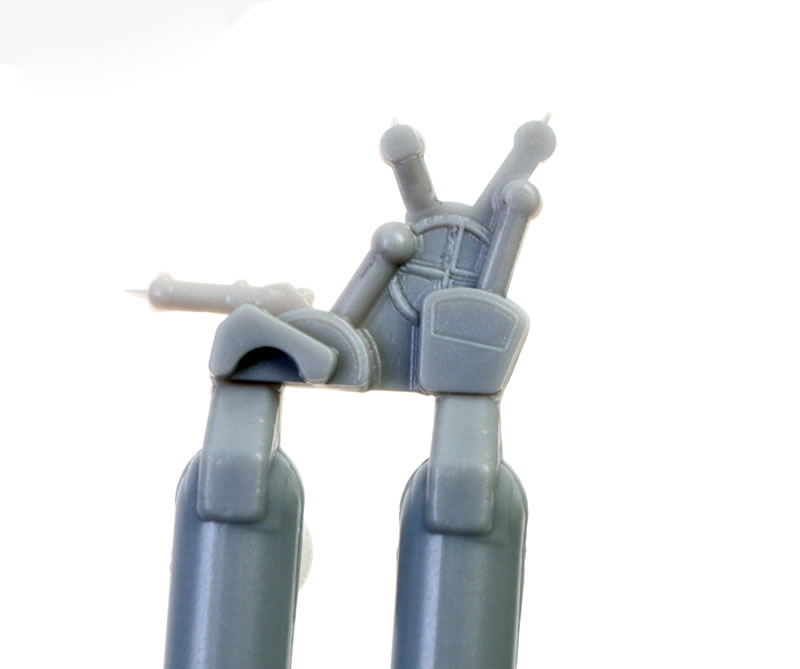
A plastic instrument panel is also supplied with raised bezels and switches. This looks great, even in the bare plastic. The decal sheet supplies two sets of harness straps and instrument panels overlays.
The landing gear is moulded in a minimum number of parts, although care will be required during alignment and assembly. Test fit thoroughly!
Main wheels are moulded as one piece each.
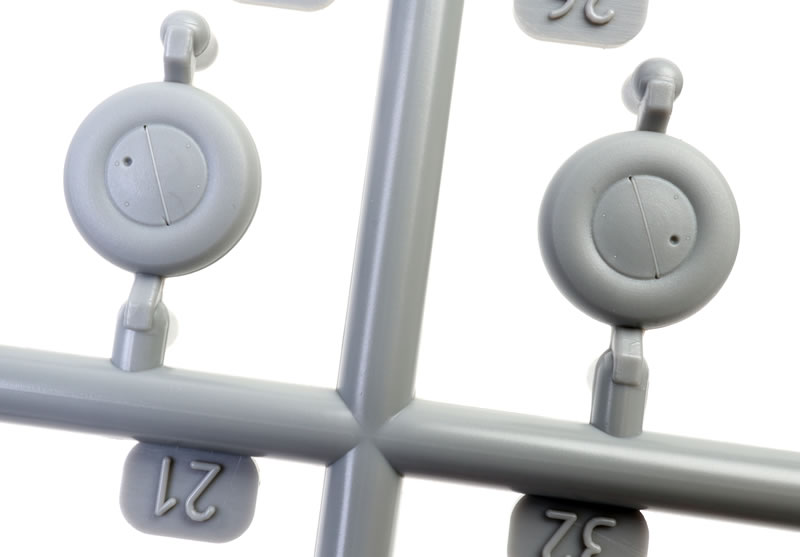
The five piece engine is very well done. The two rows of cylinders boast fine cooling fin detail. This is supplemented with pushrods and the crankcase cover.
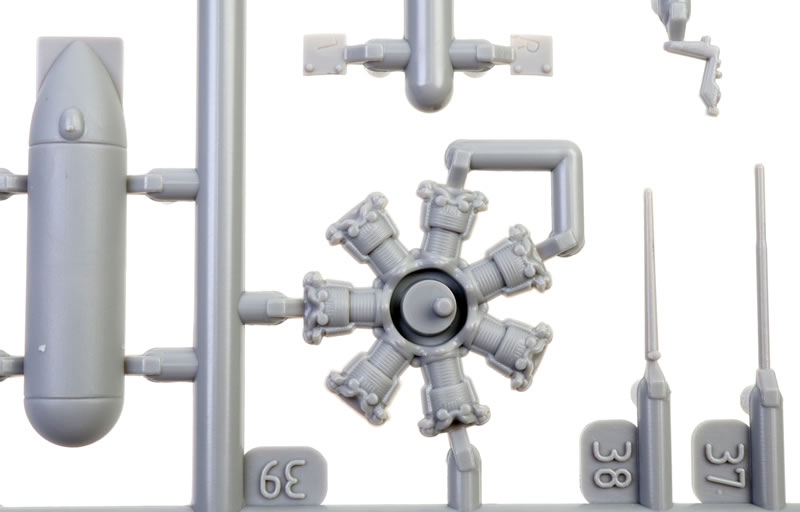
Pushrods are supplied as two hemispherical parts and the exhaust manifold is another pair of parts. Seven decals are included for the crankcase and magnetos.
Two alternative manifold / exhaust parts and forward side fuselage panels are offered.
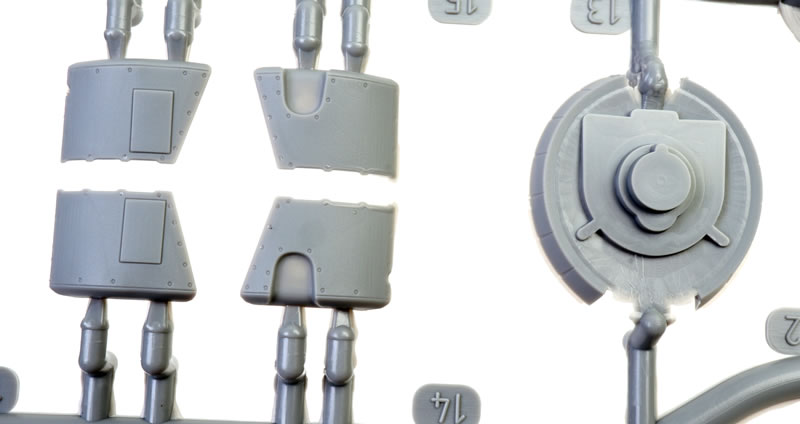
The engine cowling is broken down into five separate pieces.
The wings are moulded in two parts - full span upper and lower partss. Trailing edges are very thin – almost translucent.
Two drop tanks wrap up the grey plastic parts. Two versions are supplied - early and late - and the location under the wings vary depending on your marking preference.
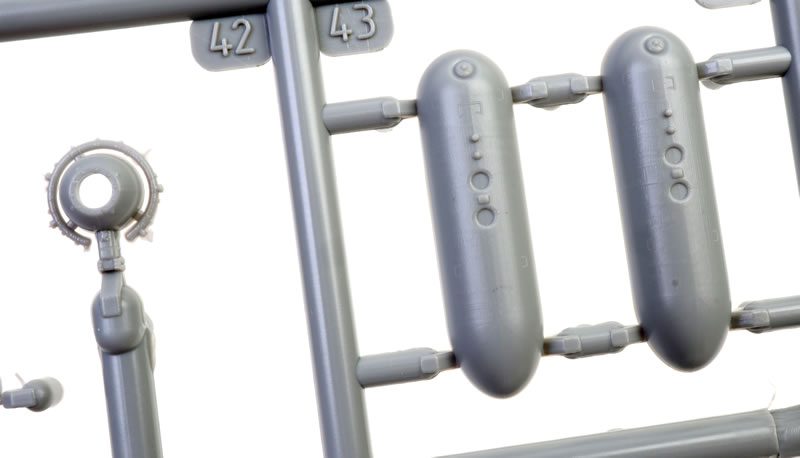
The instructions direct you to bend the sway braces 90° to the angle of the rack. I think the delicate sway braces are more likely to break than bend. I will be making a clean cut of the sway braces and then glue them back onto the racks at the 90° angle. Leave the sway braces plenty of time to set.
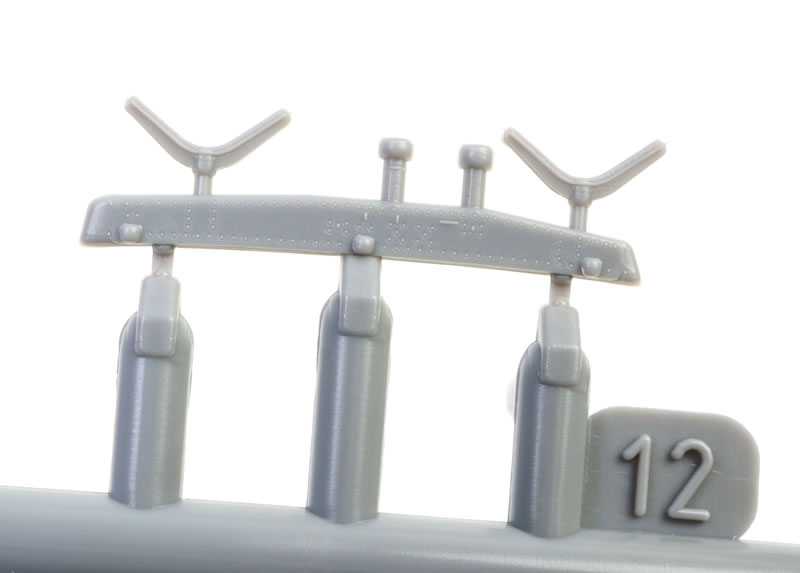
The canopy parts are thin and clear and offer separate parts for the windscreen and the sliding section. The gunsight lens is a clear part too.
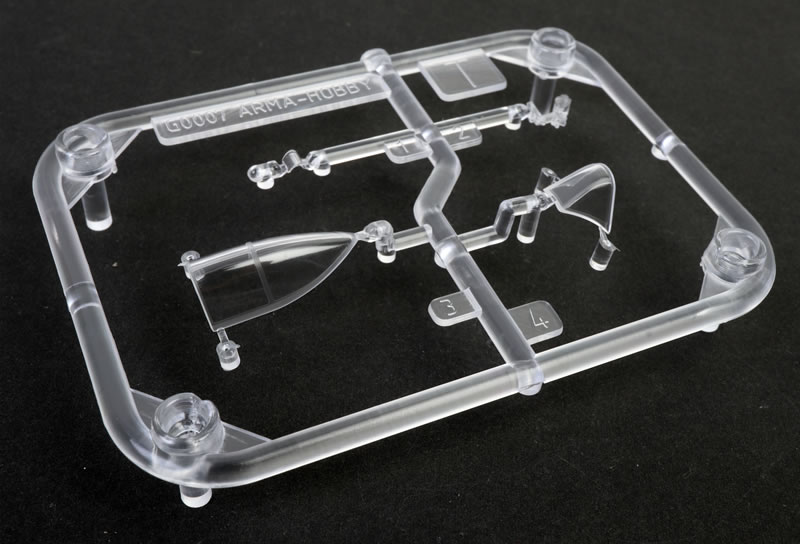
Wing tip navigation lights are moulded as part of the wings.
Self adhesive masks are supplied for the framed canopy. This will be welcomed by modellers who dislike cutting their own masks.
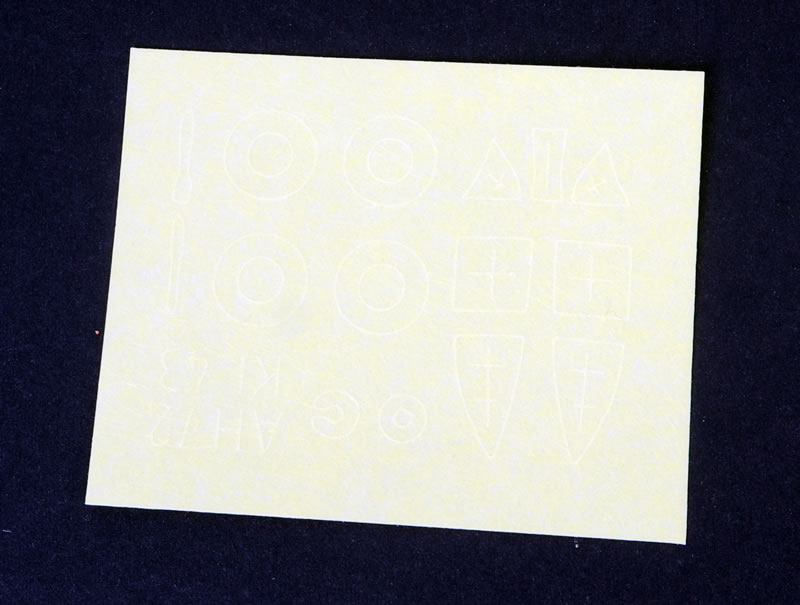
Instructions are supplied as a 12 page stapled A5-sized booklet with 24 assenbly steps. As always, make sure you test fit until you are sure where everything goes before you commit to glue.
The kit is packed into a end-opening cardboard box. I have to say that I have never been a fan of end-opening boxes - access to the parts is more difficult, loose parts can easily be lost while retrieving instructions or a larger sprue, and the format is less structurally rigid, inviting the contents to be crushed when the box is inevitably at the bottom of a pile of kits.
I know it is a nit-pick but I would prefer to see all future Arma Hobby releases in a lid-style of box.
Marking Options
Three foreign service options are offered.
-
Nakajima Ki-43 II Hayabusa, 2nd Hiko Tai, Manchukuoan Air Force 1944 in overall bare metal.
-
Nakajima Ki-43 II Hayabusa, 15th Hiko Chutai, Royal Thai Airforce, Don Muang airport, summer 1943with a green mottle over bare metal.
-
Nakajima Ki-43 II Hayabusa, 8th Fighter Squadron, 49th Fighter Group, Hollandia, May-June 1944. This is a captured Oscar in bare metal with improvised US markings including ted and white rudder stripes.
Stencil markings are delivered on the same single sheet, as are IFF leading edge wing markings and propeller logos.
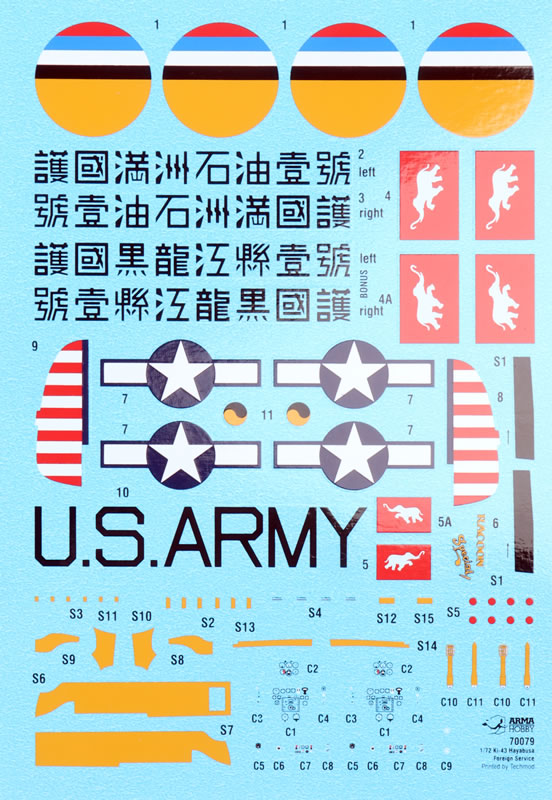
Colour callouts are provided for FS numbers and model paint numbers from a wide variety of companies – Hakata, AK, Mr Paint, Lifecolor, AMMO, Mr Color, Vallejo and Tamiya.
Decals are printed by Techmod. They are luxuriously glossy, colours are well saturated and everything is in perfect register.
Ki-43 1/72 Assembly Jig (available separately)
Arma Hobby is also offering separately a 4-piece, 3d printed plastic assembly jig. This will ensure perfect landing gear alignment and will be a useful guide for dihedral. It will be a safe way to handle the model in the final steps of assembly too.
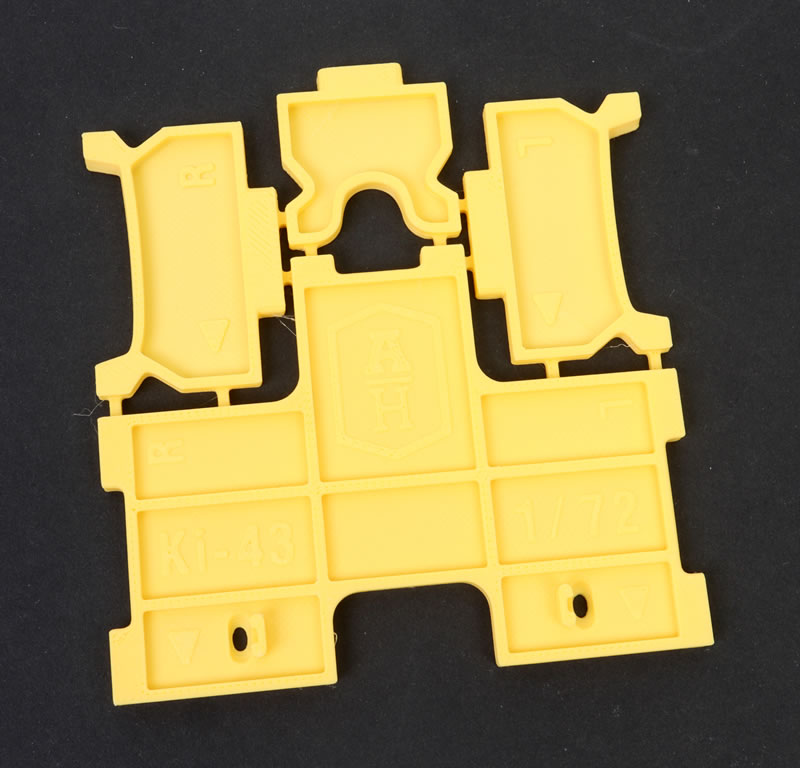
hTe jig will also ideal for safe transport to competitions or club meetings—secure the model with rubber bands and attach the jig to a transport box with double-sided tape.
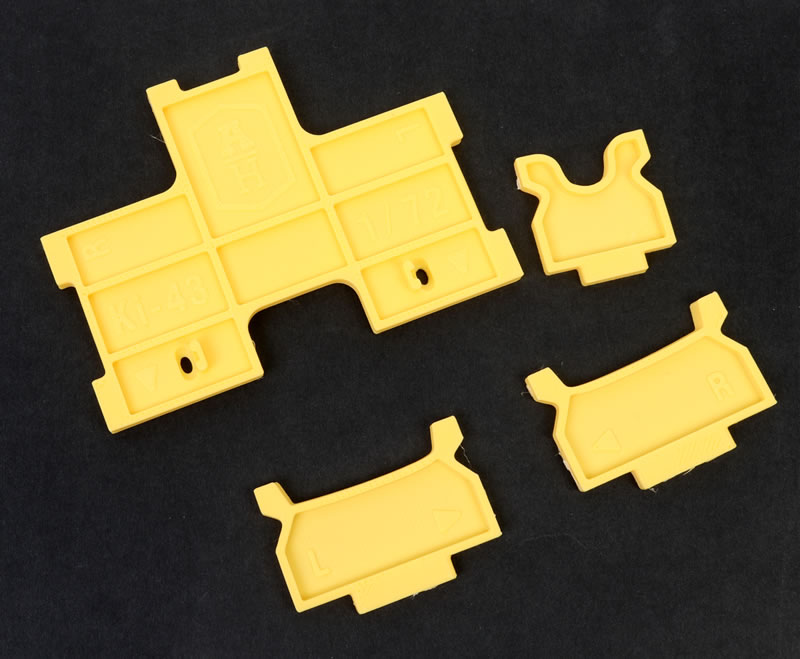
The jig comprises a base, rear and side supports. The base features raised mounting points to locate the undercarriage legs. as the glue sets.
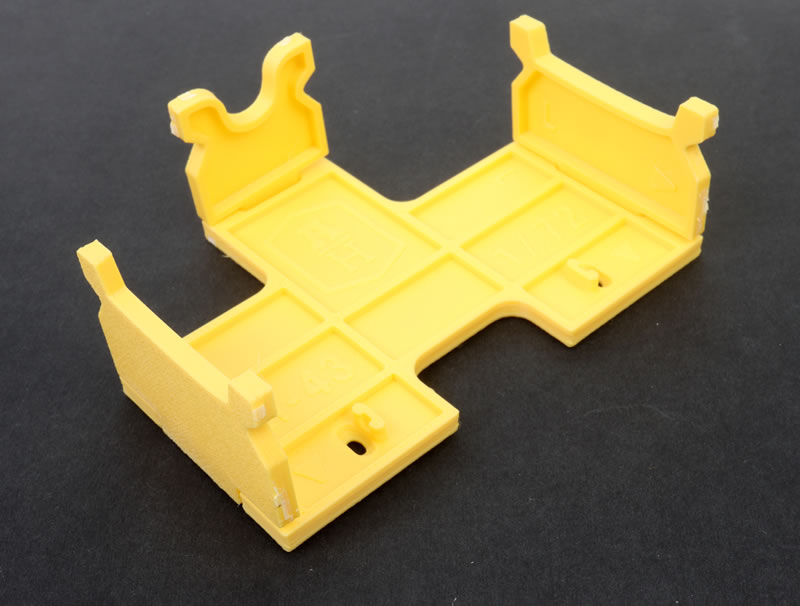
Assembly is by way of large locating tabs and recesses.
Although the material is labelled as plastic, I think it will be safest to assemble the four parts using super glue or two-part epoxy glue.
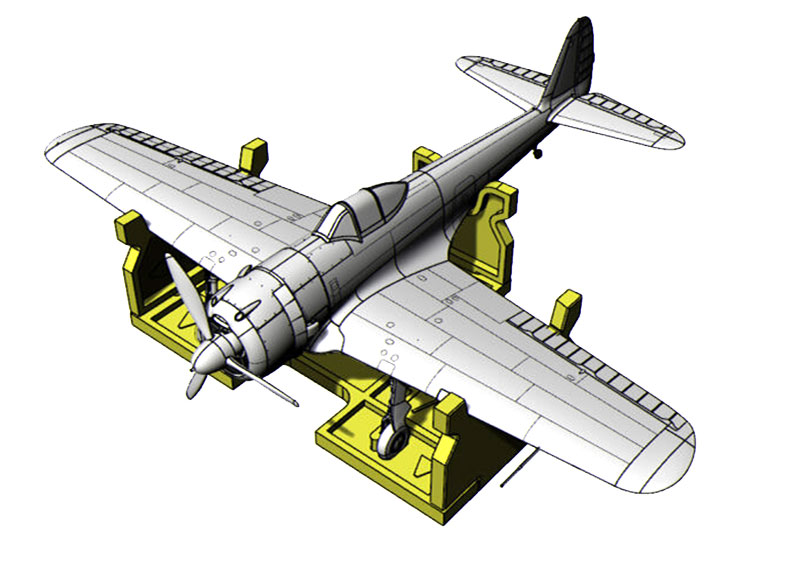
Instructions are not provided but there are arrows and text clearly cast onto the plastic parts that will ensure correct orientation.
The jig is available exclusively from Arma Hobby's web store for €5.45
Arma Hobby's second iteration of the 1/72 scale Ki-43 II Hayabusa is another gorgeous little kit - crisp surface texture, high moulding quality and a very high level of detail. It's a great package with the plastic parts as well as self-adhesive masks. What more could we ask for?
I do hope that Arma considers upscaling their Oscar to 1/48 too. The Fine Molds and Hasegawa kits were nice in their day but they are getting long in the tooth now with the Fine Molds kit dating all the way back to 1993 and Hasegawa to 2001.
In the meantime, you will enjoy Arma Hobby's 1/72 scale Ki-43 II Hayabusa!
* Historical background adapted from Wikipedia
Thanks to Arma Hobby for the sample
Review Text and Images Copyright © 2025 by Brett Green
Page Created 30 April, 2025
Last updated
30 April, 2025
Back to HyperScale Main Page
Back to Reviews Page |
Home
| What's New |
Features |
Gallery |
Reviews |
Reference |
Forum |
Search